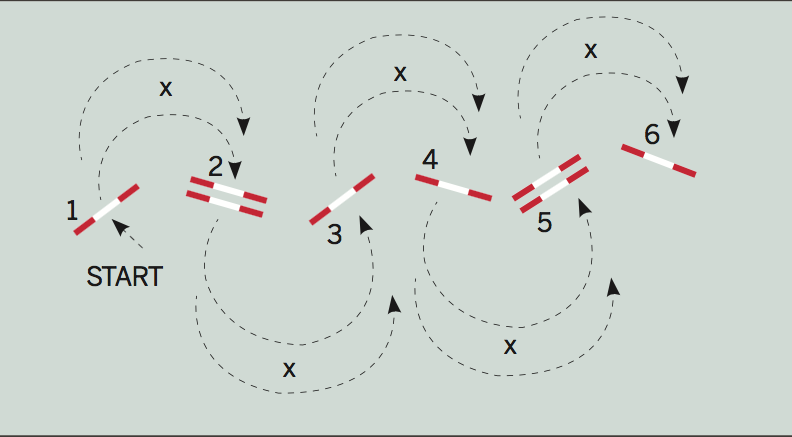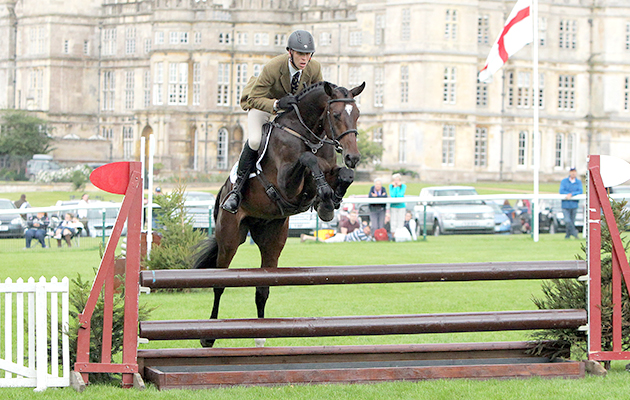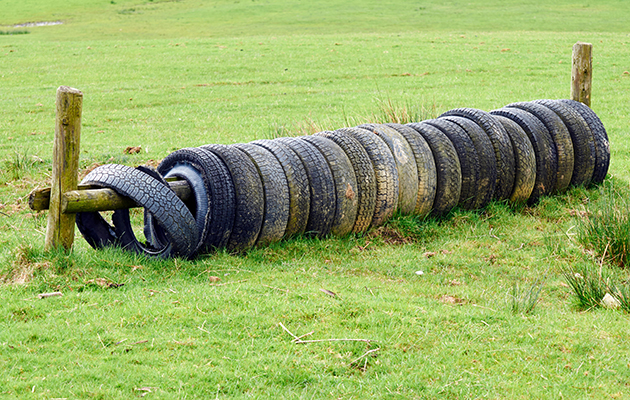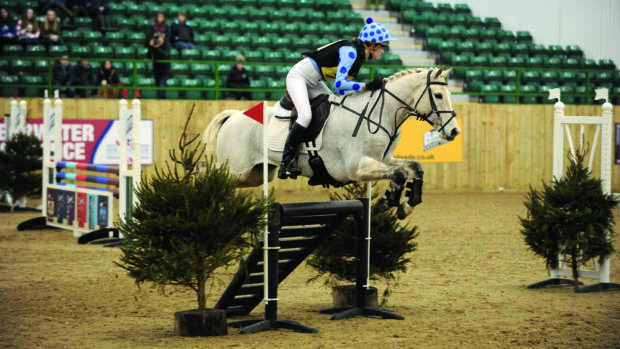This exercise, as explained by five-star Irish event rider, Camilla Speirs (pictured), explains how to improve lead changes over a fence.
Aim
The aim of the exercise is to improve straightness in the horse and the accuracy of the rider on a circle. Over time, it will also improve lead changes over a fence, as the horse develops his agility.
How to improve lead changes over a fence

1. Set up the exercise of four verticals and two oxers in the school. The blocks (X on diagram) act as markers, to help you ride a consistent, even circle. The inside circle should be 20-25m, and then 30-35m on the outside. With young horses, the blocks ensure they don’t fall in or out (depending on which line you are taking), and simultaneously make sure the rider stays accurate.
2. Young horses often waver in front of the fence if they’re coming on a tight line or circle, so it’s extremely important that the horse jumps the middle of the pole. I keep them dead straight and then, if they have a pole down, they’ve made their own mistake. Eventually, they’ll learn they need to give themselves room, back off and jump cleanly.
3. At first, it’s not a priority to influence which leg the horse lands on. I often find young horses can get flustered and lose the quality of the jump if you insist they land on the correct leg each time. For me, it’s about keeping them straight and I’ll encourage them to do a lead change after landing.
4. With older horses, this exercise helps the change of leg over the fence. All horses have a favourite leg to land on and this exercise highlights that.
5. I don’t want to encourage the correct inside leg by pulling on the inside rein or by throwing my weight to the inside, nor diminish the quality of the jump in any way. Without complicating things too much, I keep my body in the centre at all times and think about pushing the horse over the fences with my new inside leg and holding them with my new outside rein. They must not veer left or right in front of the fence and they must take off parallel behind.
6. Gradually build the verticals higher and the oxers wider. Over time, this exercise will encourage the horse to be careful and use their scope as they jump.
Article continues below…
You might also be interested in:

#SundaySchool: how to improve rhythm over fences
Event rider and coach Nick Gauntlett explains how you can use poles to dictate the rhythm that will give horse

Sarah Bullimore’s figure-of-eight jumping exercise for focus
The five-star eventer shows how the figure-of-eight jumping exercise can help develop balance, rhythm and the ability to land on

Subscribe to Horse & Hound magazine today – and enjoy unlimited website access all year round
Tips and pitfalls
- Do not fall into the trap of looking to the base of the fence. The rider must keep eyes up and around the circle. This helps keep the horse balanced and off the forehand.
- Keep your upper body back to give the horse room to tackle the verticals and make sure you stay in your jumping position on landing from the oxers, so the horse has time to finish behind.
- On tighter circles, the horse will naturally lose impulsion. Use lots of leg and keep the canter active, so you don’t lose the quality of the jump.
For all the latest equestrian news and reports, don’t miss Horse & Hound magazine, out every Thursday



